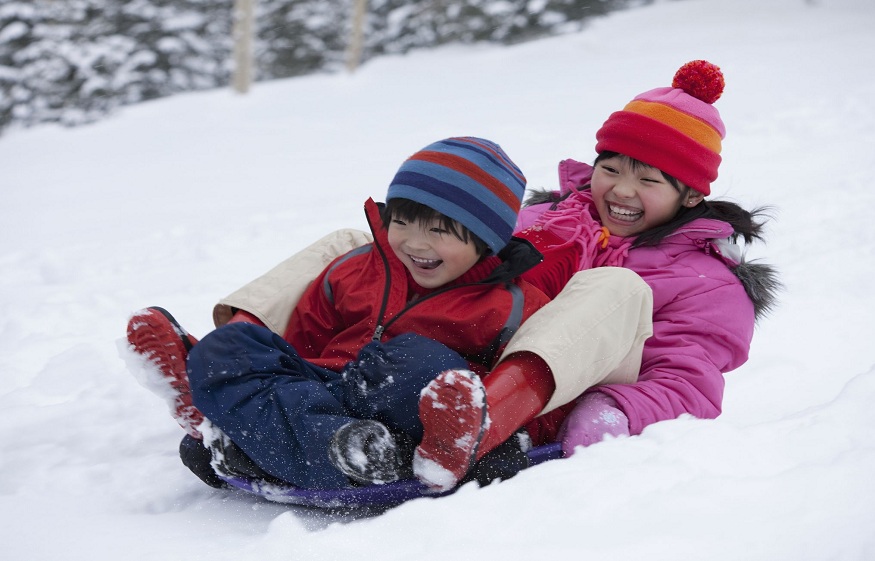Winter is a season full of wonder for children. From snowball fights and sled rides to building snowmen and sipping hot chocolate, the colder months create some of the most cherished childhood memories. But for parents and caregivers, the season also presents a number of challenges that go beyond icy roads and early sunsets.
Cold weather can increase the risk of illness and injury for kids, especially if they’re not dressed appropriately or playing safely outdoors. That doesn’t mean children should be cooped up indoors all winter but it does mean families need to be prepared.
In this article, we’ll cover how to keep children healthy and safe during wintertime play, offering practical tips for preventing frostbite, hypothermia, falls, and winter sports injuries.
Dressing Smart: The First Step in Winter Safety
One of the simplest yet most effective ways to protect children during winter is to make sure they’re dressed properly. Winter Dressing Essentials:
- Layer up: Start with a moisture-wicking base layer (avoid cotton), followed by an insulating middle layer like fleece or wool, and finish with a waterproof and wind-resistant outer layer.
- Cover extremities: Make sure your child wears a warm hat that covers the ears, gloves or mittens, a scarf or neck warmer, and thermal socks.
- Proper footwear: Insulated, waterproof boots with good traction are key to keeping feet dry and preventing slips.
For younger kids, check frequently to ensure clothing remains dry and that exposed skin isn’t turning pale or red, which could signal the early stages of frostbite.
Understanding Cold-Related Health Risks
Winter weather brings more than just snow and ice it can also lead to serious health conditions if children aren’t protected properly.
Frostbite
Frostbite happens when skin and underlying tissues freeze.
Signs to watch for:
- Skin that appears pale, white, or grayish-yellow
- Numbness or tingling
- Skin that feels unusually hard or waxy
Avoid rubbing or massaging the skin. If numbness persists, seek medical help.
Hypothermia
This occurs when the body’s temperature drops to a dangerously low level. It can be life-threatening if not addressed quickly.
Symptoms include:
- Shivering
- Confusion or sluggishness
- Drowsiness or slurred speech
- Weak pulse
If you believe your child has hypothermia, call 911 immediately. Get them into a warm, dry environment and remove any wet clothing. Wrap them in blankets and offer warm liquids if they’re conscious and able to swallow.
Winter Play and Sports: Fun with Boundaries
Outdoor activities like sledding, snowboarding, and ice skating are excellent for physical fitness and emotional well-being. But without proper precautions, they can lead to bruises, sprains, or more serious injuries like concussions.
Sledding Safety
- Always sled feet-first, sitting up never head-first or lying flat.
- Choose hills that are free of obstacles like trees, poles, or rocks.
- Avoid sledding in crowded areas or near roads and driveways.
- Use steerable sleds rather than plastic disks or improvised items.
Ice Skating Tips
- Only allow skating on surfaces that have been cleared as safe avoid ponds or lakes unless supervised by local authorities.
- Beginners should wear helmets and padding on knees and wrists.
- Encourage skating in one direction and teach kids how to stop and fall safely.
If you’re looking for a thorough guide on recognizing winter hazards and preventing seasonal injuries, this helpful article explains how to keep kids safe during winter with expert-backed advice on cold exposure, frostbite care, and sports safety.
Skiing and Snowboarding
- Kids should take lessons from trained instructors and be closely supervised.
- Helmets and goggles are essential for head and eye protection.
- Stick to slopes that match your child’s experience level avoid steep or icy terrain.
- Remind children to take regular breaks and hydrate, even in the cold.
Preventing Slips and Falls on Ice
Slippery surfaces are a hidden hazard during winter especially around school entrances, sidewalks, driveways, and playgrounds.
Fall Prevention Tips:
- Ensure kids wear boots with rubber soles and good grip.
- Salt or sand walkways around your home and school pickup areas.
- Teach your child to walk carefully with short, deliberate steps.
- Remind them to avoid running or jumping in icy areas.
If your child falls and appears injured, use the R.I.C.E. method:
- Rest: Avoid putting weight on the injured area.
- Ice: Apply an ice pack wrapped in cloth for 15–20 minutes at a time.
- Compression: Use a soft bandage to reduce swelling.
- Elevation: Raise the injured limb above heart level.
Monitor the injury, and if symptoms like swelling, bruising, or pain persist, contact a healthcare provider.
Teaching Awareness: Safety Starts with Knowledge
Even the best equipment and planning can’t replace common sense. Teaching your child how to recognize unsafe situations and how to respond is an important part of winter safety.
Help your child understand:
- When it’s time to come indoors (e.g., feeling cold, numb, or tired)
- The dangers of playing alone or in unsupervised areas
- Why they should avoid walking or skating on frozen bodies of water
- How to ask for help if they feel unwell, dizzy, or hurt
By empowering children with knowledge, you’re helping them make smarter choices on their own—something that’s valuable in every season.
Final Thoughts
Winter brings a world of fun, adventure, and bonding opportunities for families but it also comes with real health risks, especially for young children. From proper clothing and equipment to safety around ice and snow, every detail matters.
The good news? A little bit of preparation can go a long way. By understanding the hazards and knowing how to respond, you can help ensure your child enjoys a safe, happy, and healthy winter.
Take care of the small things warm gloves, safe sledding hills, and helmet reminders and the big things (like their health and safety) will follow naturally.




